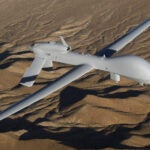
The Air Force has determined that a Navy pilot flying an A-29 Super Tucano as part of a June 2018 test flight over-controlled the aircraft and failed to apply adequate recovery control inputs, resulting in a fatal crash at White Sands Missile Range, New Mexico. Air Force Materiel Command (AFMC) released an Accident Investigation Board (AIB) report Feb. 22 detailing the cause of the accident that killed Navy Lt. Christopher Short during Phase II of the service’s light attack experiment.…

 By
By 











